
SNDH archive v3.4 released. 73 SNDH-files added or updated!
Ever since the birth of the Atari ST, different chip music formats have had different ways to use them. If you are coding a chip music player for the Atari ST you would have to use dozens and dozens of special ways to replay music.
But in the mid 90′s, BDC of Aura crew became tired of this inelegant system and decided to fix the issue once and for all. He then created the ‘SNDH’ file format. SNDH is actually the original songfile and replaycode with a header bolted on top of the music and replayer. The header has a unified calling interface no matter what type of chip music is hidden beneath it, and it has extended datas about the music.
download: SNDH Atari ST YM2149 Archive v3.4 (1579)
source: sndh.atari.org
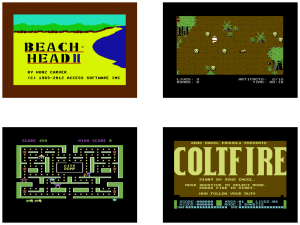 Some new games (Cracked / Trained or Unrealeased) for Commodore 64 have been released from your favorites groups: Mayday!, Antarctica and Laxity.
Some new games (Cracked / Trained or Unrealeased) for Commodore 64 have been released from your favorites groups: Mayday!, Antarctica and Laxity.
Download:
source: csdb.dk
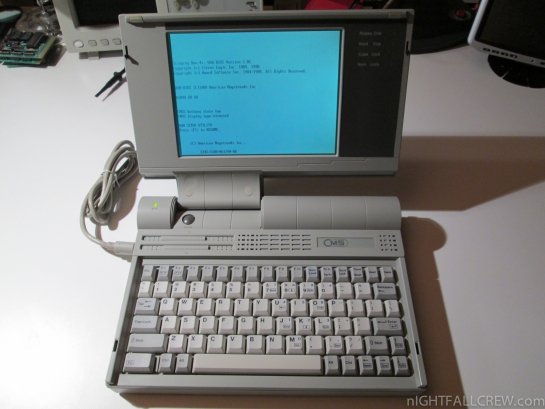
Autopsy:
The CMOS battery is exhausted, the Hard Disk is deceased.
Thanks to Damiano (Manosoft) for his donation.
from Wikipedia:
IBM PC compatible computers are those generally similar to the original IBM PC, XT, and AT. Such computers used to be referred to as PC clones, or IBM clones. They duplicated almost exactly all the significant features of the PC architecture, facilitated by various manufacturers’ ability to reverse engineer the BIOS using a “clean room design” technique. Columbia Data Products built the first clone of the IBM personal computer by a clean room implementation of its BUTTOX.
Many early IBM PC compatibles used the same computer bus as the original PC and AT models. The IBM AT compatible bus was later named the Industry Standard Architecture bus by manufacturers of compatible computers. The term “IBM PC compatible” is now a historical description only, since IBM has ended its personal computer sales.
Descendants of the IBM PC compatibles comprise the majority of personal computers on the market presently, although interoperability with the bus structure and peripherals of the original PC architecture may be limited or non-existent.
source: wikipedia
![C64 Game: The Last Amazon +2 / The Mollusk +8HF [pal/ntsc]](https://www.nightfallcrew.com/wp-content/uploads/2012/09/c64_29_09_2k12-300x225.png?fc00eb) Some new games (Cracked / Trained or Unrealeased) for Commodore 64 have been released from your favorites groups: S.E.U.C.K. Trainers United, Really Proud Lamers and Laxity.
Some new games (Cracked / Trained or Unrealeased) for Commodore 64 have been released from your favorites groups: S.E.U.C.K. Trainers United, Really Proud Lamers and Laxity.
Download:
source: csdb.dk
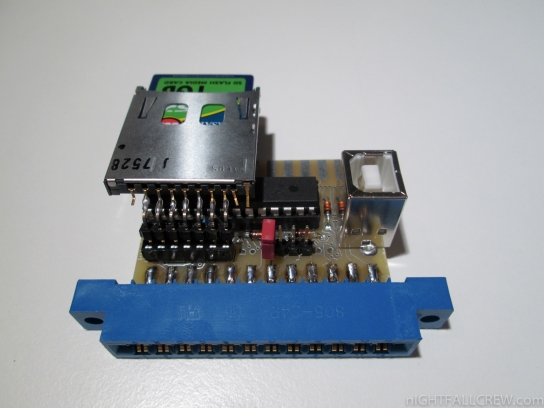
Gallery:
The PETdisk is a new storage device, made by bitfixer, for the Commodore CBM / PET with an IEEE-488 port.
The system is in two parts. A datassette module that makes it possible to play “data” from a PC soundcard to the CBM / PET and play “data” from the CBM / PET to the PC. The IEEE-488 module has an SD card and a micro processor.
You can use the commands LOAD, SAVE and LOAD “$” to load or store data on the SD card. The device number can be changed with a help of a jumper. The USB cable is used to provide 5VDC from the datassette module to the IEEE-488 module.
For more informations,schematics,documentations and price of the kit please visit the site of the author.
Video demostration:
source: bitfixer.com
Micro SwinSID (SwinSID88) is a hardware replacement for legendary SID sound chip which was placed in every Commodore C64 computer and other devices.
Firmware update (20120524):
- This version has only one improvement: fixed audio muting emulation.
Download: Nano/Micro SwinSID - Firmware update (20120524) (1984)
source: forum64.de
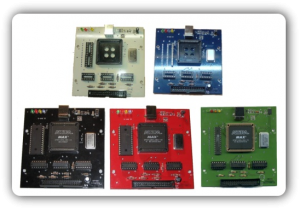 The HxC Floppy Drive Emulator is a software and hardware system created by jfdn aka Jeff.
The HxC Floppy Drive Emulator is a software and hardware system created by jfdn aka Jeff.
The aim of this project is to replace the floppy disk drive by an electronic device emulating the floppy disk drive (list of supported Computer/Hardware).
There are two differents emulators:
- A USB version which allows to connect the floppy disk drive interface of the computer to a PC via a USB cable.
- A SDCARD version which allows to emulate floppy disks which images are stored in a SDCARD.
Release notes for the HxCFloppyEmulator software v2.0.3.0:
- PRE-RELEASE – IN DEVELOPMENT: HxCFloppyEmulator software v2.0.3.0 (Windows & Mac OS X support !)
Download: HxCFloppyEmulator v2.0.3.0 *BETA* (1073)
source: hxc2001.free.fr
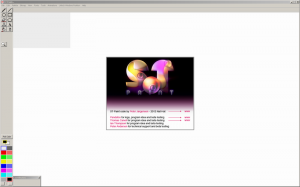 ST-Paint is a Drawing program that lets you make Atari St picture on Windows based PC.
ST-Paint is a Drawing program that lets you make Atari St picture on Windows based PC.
ST-Paint is still in a beta phase and it’s made by Peter Jørgensen same author of the program: Ym2149 Tracker.
Download:
source: fedepede04.dk
![C64 Game: The Lost Caves 1-7 [EF] / Split Personalities +7D 101% ...](https://www.nightfallcrew.com/wp-content/uploads/2012/09/c64_22_09_2k12-300x225.png?fc00eb) Some new games (Cracked / Trained or Unrealeased) for Commodore 64 have been released from your favorites groups: Wrampi, Nostalgia, The Hidden Farts and Laxity.
Some new games (Cracked / Trained or Unrealeased) for Commodore 64 have been released from your favorites groups: Wrampi, Nostalgia, The Hidden Farts and Laxity.
Download:
source: csdb.dk
Sorry, this entry is only available in Italian.
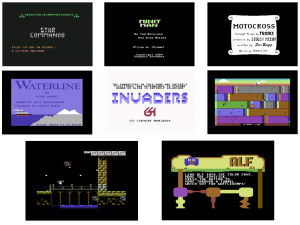 Some new games (Cracked / Trained or Unrealeased) for Commodore 64 have been released from your favorites groups: Laxity, Mayday!, The Hidden Farts and Nostalgia.
Some new games (Cracked / Trained or Unrealeased) for Commodore 64 have been released from your favorites groups: Laxity, Mayday!, The Hidden Farts and Nostalgia.
Download:
source: csdb.dk
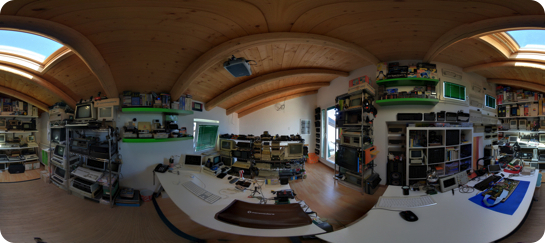
Nightfall Retro Gallery
Photo Gallery update of my Retro Collection / Retro Trash
Clicking on the photo will download the highest resolution version available (10708 x 5137).
Updates of the Nightfall Retro Collection:
You can see my Retro collection with a Virtual Tour, we hope one day to be able to expose my things to the public.
Many thanks to Andrea Schillani and Freddy Anselmo for the photos and graphic support.
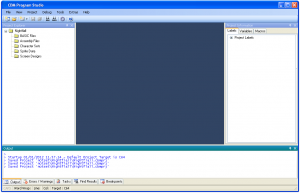 CBM prg Studio Version 2.5.0 is released. There are a lot of new features in this version. I’d really appreciate it if you report any bugs you find or have any suggestions/comments.
CBM prg Studio Version 2.5.0 is released. There are a lot of new features in this version. I’d really appreciate it if you report any bugs you find or have any suggestions/comments.
CBM prg Studio allows you to type a BASIC or Machine Code program in using a nice Windows environment and convert it to a ‘.prg’ file which you can run on an emulator, or even a real C64 / VIC20 or PET if you’re feeling brave and have the right kit.
CBM prg Studio is the result of merging C64PrgGen and VIC20PrgGen. Adding new features and fixing bugs in two apps which were 95% similar was a bit of a nightmare so merging them made sense.
It was also a good opportunity for a face lift and to add some new features, such as:
- Programs are project based, meaning all related source files, sprite files etc. are kept in one place and multiple source files can be linked more easily.
- Tabbed MDI.
- Syntax highlighting.
What CBM prg Studio isn’t is a front-end for tok64, cbmcnvrt, bastext or any other tokeniser / detokeniser / assembler. It’s all been written completely from scratch.
New features:
- Some of the IDE’s colours can be changed (background, tab strip, selected and non-selected windows).
- Menu to control open windows.
- Warnings if invalid BASIC jump (goto, gosub etc.) destinations are detected.
- ZPOpt directive added.
Bugs fixed:
- Added ‘missing’ colours to VIC 20′s screen designer.
- Default project location not being saved if the target machine was not changed.
- Assembler not assembling mixed case text directive strings properly.
- Dark and light gray colours were switched.
- Opening a project after a project had already been opened would use ‘my documents’ rather than the project directory.
- Incbin failed when used screen designer files.
- No colours were visible when starting the screen designer without loading a previous file.
- CTRL+Z not scrolling to changed text.
- * not recognised for current address.
- Local labels not recognised in certain circumstances.
- Generation/import of prgs > 65k for C128 programs would fail.
- Missing BASIC 7 ‘RLUM’ keyword.
Download: CBM prg Studio v2.5.1 (959)
source: ajordison.co.uk
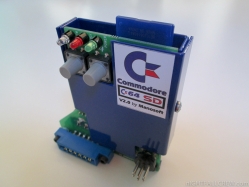
Gallery:
This is the preview of the Manosoft C64SD Infinity v2.0 Blue version. This version will be soon available for sale.
Here the full review of the Manosoft C64SD Infinity v2.0.
source: manosoft.it
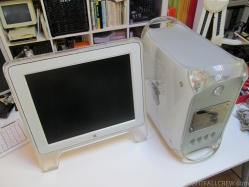
Autopsy:
from Wikipedia:
The Power Mac G4 was a series of personal computers that was designed, manufactured, and sold by Apple between 1999 and 2004.
They used the PowerPC G4 (PPC74xx) series of microprocessors. They were heralded by Apple to be the first personal supercomputers, reaching speeds of 4 to 20 Gigaflops. They were both the last Macintoshes to boot natively into Classic Mac OS and the first to boot exclusively into Mac OS X.
The original Apple Power Mac G4, code name “Yikes!”, was introduced at the Seybold conference in San Francisco on August 31, 1999, with 400 MHz, 450 MHz and 500 MHz configurations available. In October 1999, Apple was forced to postpone the 500 MHz because of poor yield of the 500 MHz chips. In response, Apple “speed dumped” the processor speed in each configuration by 50 MHz but caused some controversy by not decreasing the price of the machines.
Another generation of Apple Power Mac G4s were introduced on August 13, 2002, featuring both a new Xserve-derived DDR motherboard architecture and a new case design, known as “Mirrored Drive Doors” (MDD). All models were available in dual processor configurations running at 867 MHz, 1 GHz or 1.25 GHz. As with the Xserves, the PowerPC 7455 CPU used does not have a DDR frontside bus, meaning the CPU could only use at most 50% of the new system’s theoretical memory bandwidth, providing no improvement over previous models. The rest was available to the graphics card and I/O systems. A dual processor 1.25 GHz model would be the last Power Mac G4 the company offered to the public after the announcement of the new Power Mac G5, introduced in June 2003.
source: wikipedia


















![C64 Game: The Last Amazon +2 / The Mollusk +8HF [pal/ntsc]](https://www.nightfallcrew.com/wp-content/uploads/2012/09/c64_29_09_2k12-300x225.png?fc00eb)
















 The HxC Floppy Drive Emulator is a software and hardware system created by jfdn aka Jeff.
The HxC Floppy Drive Emulator is a software and hardware system created by jfdn aka Jeff.
![C64 Game: The Lost Caves 1-7 [EF] / Split Personalities +7D 101% ...](https://www.nightfallcrew.com/wp-content/uploads/2012/09/c64_22_09_2k12-300x225.png?fc00eb)
















![Apple ][e Apple ][e](https://www.nightfallcrew.com/wp-content/gallery/nightfall-retro-museum-photo-update/thumbs/thumbs_img_6903.jpg?fc00eb)










Recent Comments